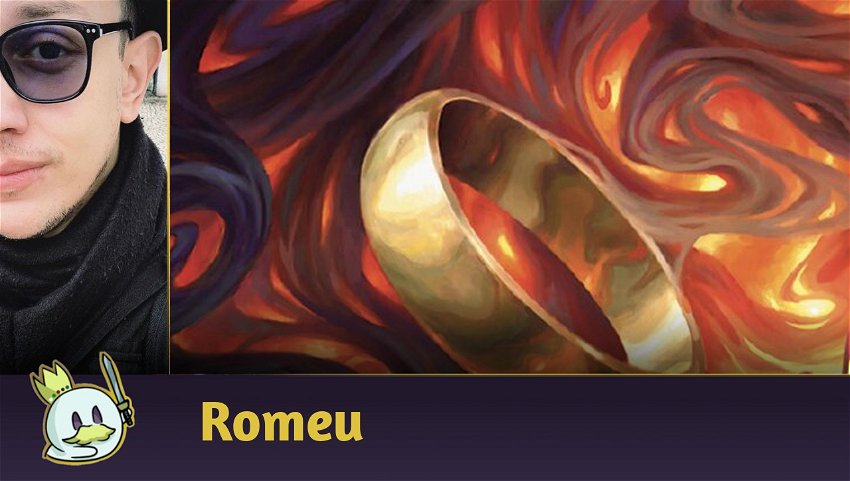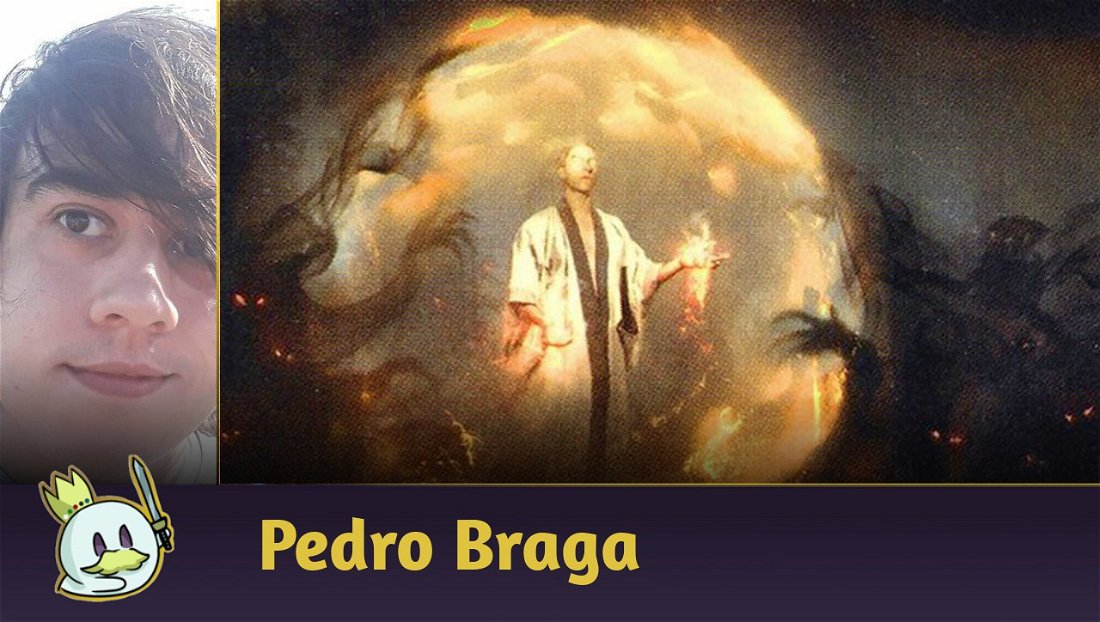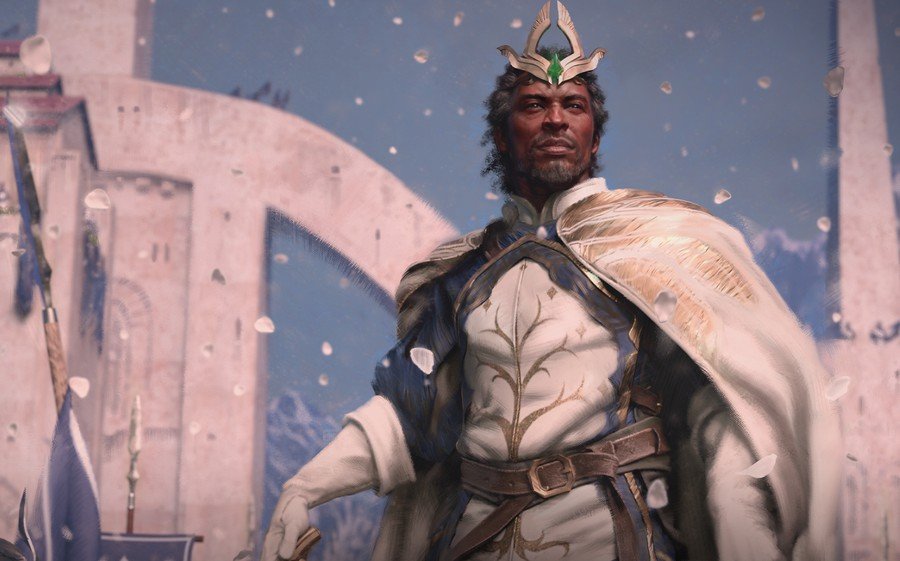With the official release of Lord of the Rings : Tales of Middle-earth, last weekend was a busy one for competitive formats, especially for Modern, where some of the main cards of the new set were ostensibly tested.
In this article, we highlight the main Lord of the Rings cards that appeared in this weekend's big Modern events, and speculate on the impact the new set could have on the Metagame!
A Ring to Rule Modern?
Ad
While everyone was speculating about the potential of Orcish Bowmasters, Stern Scolding or Delighted Halfling, the card that stood out the most this weekend, and continues to grow in both presence and market value, was the most iconic piece of the entire Middle-earth franchise: The One Ring!

As a colorless card, The One Ring has proven to be powerful enough to be in a variety of non-aggressive archetypes. Its ability to offer protection from everything to its controller works like a pseudo-Fog or Time Warp, depending on the board position, while two activations of the card (one on the turn it enters in play, and another on a subsequent turn) grant at least three cards to its controller.
Added to the lack of good maindeck and/or sideboard responses in the current Metagame against indestructible artifacts, The One Ring has become an important piece in numerous Modern strategies.
In combo lists like Grinding Breach, The One Ring offers another turn and three cards, enough to start endless loops with Emry, Lurker of the Loch alongside Mox Amber, Grinding Station, or even a multiple sequence The One Ring to "lock" the game for infinite turns.
Scapeshift was another archetype that returned this weekend with the presence of The One Ring. As with other combo archetypes in which the card was present, three cards and a turn amplify the possibility of finding the necessary pieces to close the combo, in addition to guaranteeing one more land drop for Valakut, the Molten Pinnacle .
Tron was one of the archetypes where the Ring had the greatest potential to appear. Contrary to expectation, it was not included as a one-of for the Karn, the Great Creator toolbox, but with four copies on the maindeck!
Like the archetypes above, a turn and three cards makes a huge difference for the player and Tron, given that this can mean two to three more mana, and the deck is already known for having one of, if not the best, topdeck in the format.
Furthermore, Karn, the Great Creator is an excellent means of stalling the activation of the opponent's The One Ring, while Wurmcoil Engine helps mitigate any damage that would be dealt by the artifact.
Ponza was another strategy that returned this week, thanks to the presence of The One Ring, and while this one doesn't benefit as much from the "extra turn" effect, it's one of the best at taking advantage of the Ring's card advantage after casting Blood Moon, while the artifact amplifies the potential of playing fair Magic.
And of course, the most powerful card of the season couldn't be left out of the Goodstuff archetypes, which also benefited from the inclusion of Delighted Halfling to speed up and protect the cast of Teferi, Time Raveler, Nissa, Resurgent Animist and Omnath, Locus of Creation, as well as allowing you to play Fury and Solitude for their costs one turn early.
Ad

Due to being unable to run artifacts and other creatures, Four-Color Creativity variants couldn't try out The One Ring in their lists, and with the artifact's cast effect protecting the player from Archon of Cruelty, players might want to move away from this proposal, and seek in the combo of Saheeli Rai and Felidar Guardian the necessary security to take advantage of the Ring in fair and attrition matchups, while still enabling the threat of a combo-kill.

The fate of The One Ring in Modern is yet to be defined. In its first week, the card felt like it was on top of what's best in the Metagame, and it's on a par with the other cards that have become staples of multiple archetypes or strategies over the last few years.
On the other hand, it is also time for other archetypes to adapt, and include efficient responses against the artifact in their Sideboards. However, the parts efficient ways to deal with it are also too linear, with the best ones currently being Cast into the Fire, which can deal with small creatures, and Haywire Mite, which can be sought with Urza's Saga.
Pithing Needle is another decent option, and works to avoid multiple Ring activations, while Disdainful Stroke can get its space back on the Sideboards, if your decks can handle Delighted Halfling,
Orcish Bowmasters: Good but not great

Orcish Bowmasters was considered by many to be the best Tales of Middle-earth card for competitive formats, and while that maxim seems to hold true in Legacy, the Orcs did little for this past weekend.
Among the top decks that made results, Bowmasters appeared only on this Rakdos Undying list, alongside Dauthi Voidwalker, and also on Sunday's Challenge winning list, a Golgari Yawgmoth with several LotR cards.
Its inclusion in Yawgmoth is an interesting choice: while the creature punishes opponents for drawing too many cards (and thus serves as an indirect hate against The One Ring), Bowmasters offers two bodies for the cost of one, from which Yawgmoth, Thran Physician manages to masterfully take advantage of.
Samwise Gamgee: A new combo for combo decks?

Samwise Gamgee stars in a new combo alongside Cauldron Familiar, which leads to an infinite damage loop with any sacrifice outlet. While the most common option was Viscera Seer, other cards also interacted with the combo proposal and brought some variants of already known archetypes.
Abzan Yawgmoth is one such combination, where the list resorts to a slight splash to white to include Samwise, as well as Boromir, Warden of the Tower on the Sideboard.
In this version, Yawgmoth, Thran Physician serves as another sac source for the combo, and one that also offers infinite draws, as you mitigate the life loss with the lifegain from Cauldron Familiar trigger.
Ad
Classic Food variants also explored the new combo this weekend. Here, Asmoranomardicadaistinaculdacar teams up with Academy Manufactor and Finale of Devastation to scavenge the necessary parts while controlling the game, and even allows securing an absurd board alongside Urza's Saga, due to the number of artifacts produced by the rest of the list.
Other variants went even further with the token theme, opting for Chatterfang, Squirrel General and Lonis, Cryptozoologist to expand interactions between their cards and Academy Manufactor.
Forge Anew: New tweaks for Hammer Time!

Forge Anew was Tales of Middle-earth's best addition to Hammer Time, and while it did shy results over the weekend, some variants took advantage of the new enchantment at some number between 2 and 3, to increase the consistency with which the deck can equip its artifacts on key creatures.
The biggest news was for Gen Shinohara's Boros Hammer Time list, who took advantage of the new enchantment to place a small graveyard package alongside Goblin Engineer and Seasoned Pyromancer, to put Argentum Armor to the battlefield with Forge Anew.

While the combo looks great if used in the first few turns, the decrease in consistency in an already well-established strategy makes me question whether Argentum Armor is, in fact, the best option.
However, Forge Anew opens new precedents for Goblin Engineer, where it can operate as extra copies of Stoneforge Mystic alongside the enchantment.
Living End: Fewer lands, more cycling

Lord of the Rings' new creatures with Landcycling gave Living End the opportunity to include more threats to cycle without reducing the amount of lands the deck needs to operate.
New versions of the archetype now run between 16 and 14 lands, with some number between four and eight copies of Generous Ent and Oliphaunt. My little experience with Living End leads me to not have many opinions about this change, but it seems far more beneficial than having a higher number of "dead cards" in your hand, and they work as extra copies of Fetch Lands for what it proposes.
Flowering of the White Tree: Boros Convoke has arrived in Modern!

While Flowering of the White Tree doesn't look impressive considering its deckbuilding concessions, an Honor of the Pure for two mana is enough for more aggressive archetypes to want it on their lists. With that, and the existence of Kuldotha Rebirth in Modern, Boros Convoke has earned its place in the Metagame!
Flame of Anor: Red has finally arrived on Merfolks!
Flame of Anor is one of the most powerful and most conditional cards in Lord of the Rings. On the one hand, all of its effects are decent, and being able to choose two of them if you control a Wizard makes it a removal that draws two cards, or a 2-for-1 effect on archetypes that resort to artifacts.
Ad
However, there are serious trade-offs in needing Wizards to function, and three mana isn't cost-efficient by Modern's individual draw and removal standards today, despite being comparable to Esper Charm.
For Merfolks, however, the biggest concession is found in the splash for red, given that a significant portion of their creatures are already Wizards.
The Delightful Return of Mana Dorks

If we look at the above lists, the most present card of the new set in the main Modern decks this weekend, next to The One Ring, was a category of creature that we don't see frequently in the format: a mana dork - Delighted Halfling.
Delighted Halfling is the type of dork that is never bad. Worst-case scenario, it's a Boreal Druid with one more toughness, and helps cast certain cards sooner. At best, it locks the main interaction against high-impact cards - Counterspells.
With a game design where legendary cards are getting stronger and more present in the competitive environment, the new mana dork becomes a key piece to ensure that some of the best legendary cards in the format, such as Teferi, Time Raveler, Nissa, Resurgent Animist, Wrenn and Six and Omnath, Locus of Creation not only come into play sooner, but also ensures that they have the desired impact or demand an immediate answer.
It's been years since a mana dork has been as important to Modern as Delighted Halfling is, and in a Metagame where that category has been abandoned by several strategies due to Fury, it's nice to have that breath of fresh air in the competitive environment.
Conclusion
That's all for today.
Contrary to what some claim, Modern is still experimenting with Tales of Middle-earth, and it seems too early to say that this is the moment to consider a direct intervention.
The One Ring does seem like a dangerous card for the format's health because it enters many strategies without any concessions (Mono Black Coffers and Mill are already running it in leagues), and I wouldn't be surprised if the artifact earns a status in the competitive environment that only a few cards from Modern Horizons and Modern Horizons II have achieved.
However, we are now in the second week of the format, and we need more data and results for an assertive assessment on how much LotR has changed Modern, and whether we can expect bans in the next few months.
Thanks for reading!








— Commenti0
Diventa il primo a commentare